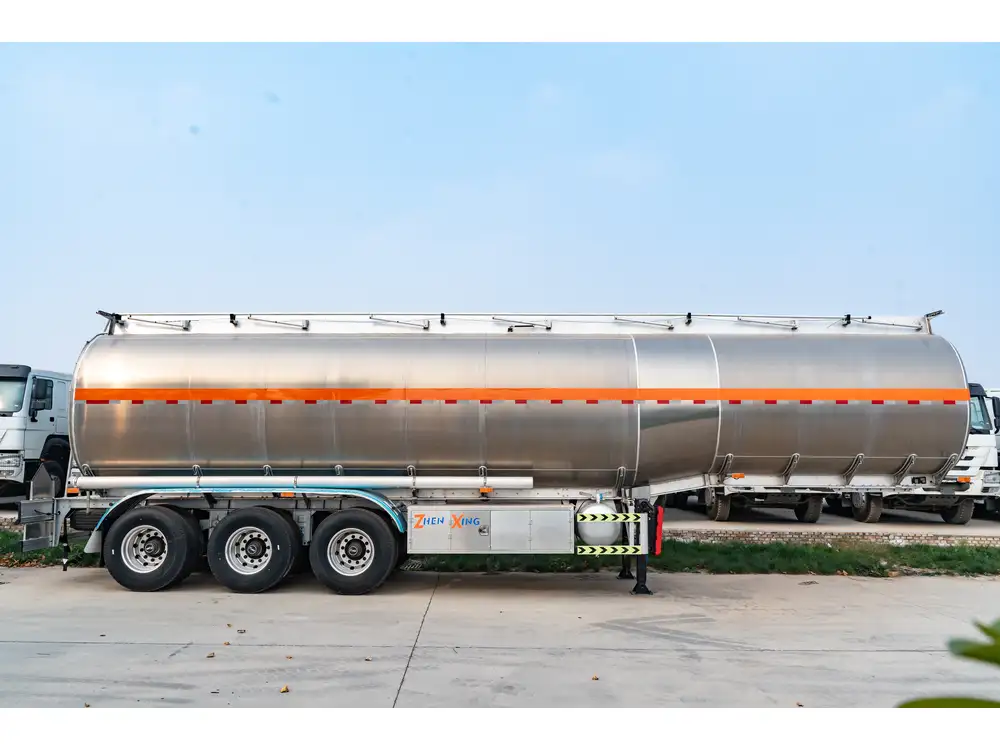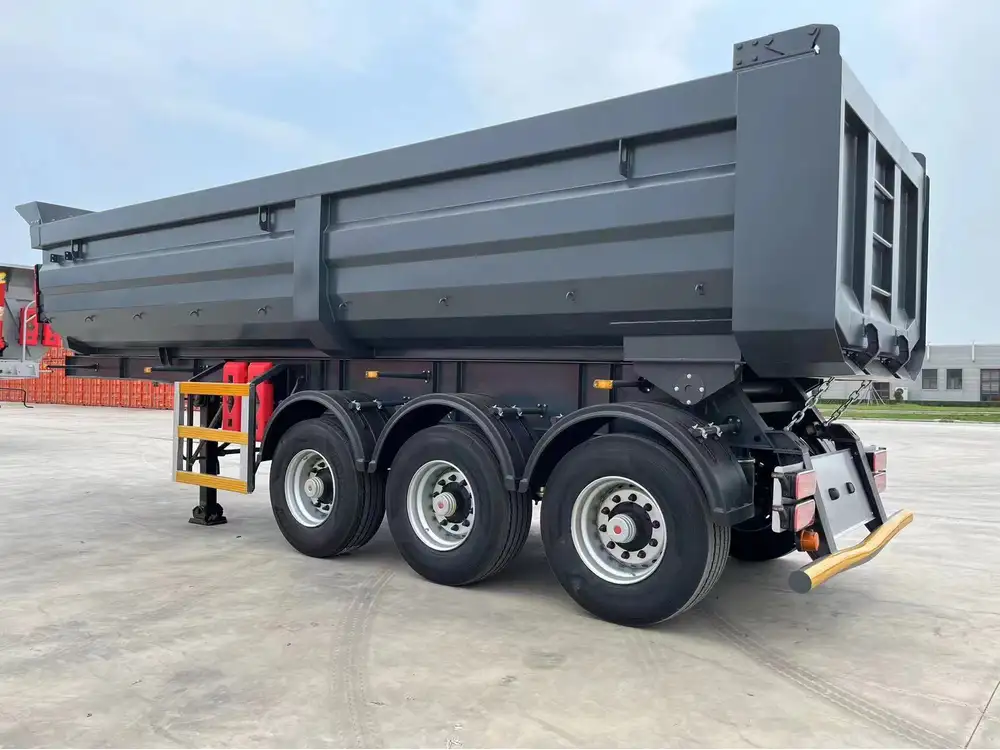Whether you’re engaged in construction, farming, recreational activities, or simply need a reliable transport solution, a personal flatbed trailer can be a game-changer. With their versatility and capacity, flatbed trailers serve a multitude of purposes, making them a vital purchase for many individuals and businesses alike. This comprehensive guide aims to equip you with the essential knowledge and insights needed to make an informed decision when selecting a flatbed trailer.
Understanding Your Needs: Application and Purpose
Before diving into the specifics of what to look for in a flatbed trailer, it’s crucial to pinpoint your unique needs. Consider the following categories to refine your decision-making:
1. Primary Use
| Purpose | Considerations |
|---|---|
| Construction | Heavy-duty models with high weight capacities and durable materials are essential for transporting construction materials. |
| Agriculture | Look for models equipped with features that facilitate loading and unloading of heavy equipment and livestock. |
| Recreation | If planning to haul recreational vehicles (like ATVs or motorcycles), ensure the trailer has the appropriate dimensions and tie-down points. |
| General Hauling | For everyday uses, a standard flatbed with sufficient payload capacity can meet a variety of hauling needs. |

2. Weight Capacity
Understanding weight capacity is fundamental. Flatbed trailers come in various weight ratings, so determining your maximum load is essential. The weight capacity is typically classified into:
- Light-duty: Up to 3,000 pounds.
- Medium-duty: 3,000 to 10,000 pounds.
- Heavy-duty: Greater than 10,000 pounds.
Tips:
- Assess Payload: Always calculate the total weight of the cargo you intend to transport including any extra equipment or accessories.
- Include Trailer Weight: Remember to account for the weight of the trailer itself when considering your overall capacity.
Structural Integrity: Material and Construction
Trailer material impacts not only durability but also performance and maintenance. Here are common materials used in flatbed trailers:
| Material | Pros | Cons |
|---|---|---|
| Steel | High strength, suitable for heavy loads | More susceptible to rust and corrosion; heavier |
| Aluminum | Lightweight, rust-resistant | Generally more expensive; may have lower weight limits |
| Wood | Cost-effective and easy to replace | Less durable; requires regular maintenance |

Recommendation
Evaluate where the trailer will be stored and how often it will be exposed to the elements. If rust and corrosion are a concern, an aluminum model may be worth the investment.
Configuration and Size: Finding the Right Dimensions
The dimensions of the flatbed trailer dictate its usability. Consider the following factors:
1. Length and Width
- Standard Sizes: Flatbed trailers typically range from 12 to 30 feet long and 6 to 8.5 feet wide.
- Payload Area: Ensure the payload area is adequate to accommodate the items you are planning to transport without overhanging.

2. Height
- The trailer’s deck height plays a crucial role in loading and unloading efficiency. A lower deck height can facilitate greater ease of access for loading heavy equipment.
3. Number of Axles
More axles can enhance stability and weight distribution. For typical personal use, a single axle is often sufficient, whereas heavier loads may necessitate a double or even triple axle configuration for optimal balance and maneuverability.
Compliance and Regulations: Legal Considerations
It’s paramount to ensure that the chosen flatbed trailer complies with local and federal regulations.

1. Weight Limitations
Every state has specific laws regarding weight limits on highways. Be aware of these regulations to avoid fines and legal issues.
2. Safety Features
Depending on the type of load you’re transporting, you may need specific safety features like:
- Lighting: Proper lighting for visibility during transport.
- Brakes: Consider electric or hydraulic brakes, especially for heavier loads.
- Reflective Markings: Required for some trailer types to enhance visibility and safety.
Essential Features and Accessories to Consider
When searching for a personal flatbed trailer, several features can enhance functionality and ease of use.

1. Tie-Down Points
Effective tie-down points are essential for securing loads during transport. Check if the trailer comes with:
- D-Rings: Standard for heavier equipment transport.
- Lashing Points: Useful for securing lighter cargo.
2. Ramps and Loading Solutions
Depending on the type of cargo, ramps can be advantageous:
- Folding Ramps: Provide a flush surface during loading.
- Detachable Ramps: Allow for easier transportation of larger vehicles.
3. Fenders
Fenders protect the tires and cargo while preventing debris from kicking up during transit.

Brand Reputation and Reviews: Selecting the Right Manufacturer
With numerous manufacturers on the market, it’s essential to choose a reputable brand known for quality and customer service. Look for:
- Customer Feedback: Read reviews and testimonials to gauge user experiences.
- Warranty Options: A solid warranty indicates manufacturer confidence in their product.
Suggested Brands
| Brand | Notable Features | Warranty Options |
|---|---|---|
| Big Tex | Customizable options and high weight limits | 1 to 5 years on specific parts |
| Load Trail | Durable fender design, extensive accessory options | Up to 5 years on select models |
| Bergman | Lightweight models with corrosion-resistant options | Limited lifetime warranty |
Maintenance Tips for Longevity
Investing in a flatbed trailer doesn’t end with the purchase. Maintaining its integrity and functionality is vital for longevity.

1. Regular Inspections
Conduct regular inspections to ensure:
- Brakes: Functionality and wear.
- Tires: Air pressure and tread depth.
- Lights: Working order for safety.
2. Cleaning
Regular cleaning prevents rust and deterioration. If the trailer is made from steel, using a rust inhibitor after cleaning can extend its lifespan.
3. Proper Storage
When not in use, store the trailer in a dry, covered area to minimize exposure to the elements.

Cost Considerations: Balancing Budget and Quality
While it may be tempting to opt for the cheapest available option, remember that cost often reflects quality. It’s crucial to balance affordability with specifications that meet your needs.
1. Budgeting Tips
| Category | Average Cost Range | Considerations |
|---|---|---|
| Light-duty Trailers | $1,000 – $3,000 | Good for small jobs; limited weight capacity |
| Medium-duty Trailers | $3,000 – $7,000 | Ideal for regular use and heavier loads |
| Heavy-duty Trailers | $7,000 – $15,000+ | Best suited for commercial use or heavy equipment transport |
2. Financing Options
Explore financing options offered by dealers, which can make a more expensive trailer more accessible.

Conclusion: Making an Informed Purchase
Choosing the right personal flatbed trailer requires careful consideration and assessment of various factors including purpose, capacity, construction, compliance, features, and costs. By understanding your needs, analyzing key components, selecting reputable brands, and planning for maintenance, you can make an informed purchase that will serve you well for years to come.
In summary, whether you require a trailer for business or personal use, equipping yourself with comprehensive knowledge is paramount. Embrace every aspect of flatbed trailer evaluation, and you’ll find the ideal fit tailored precisely to your requirements. Your venture into the world of flatbed trailers can be both rewarding and beneficial if you approach it with the right mindset and ample information at hand.



